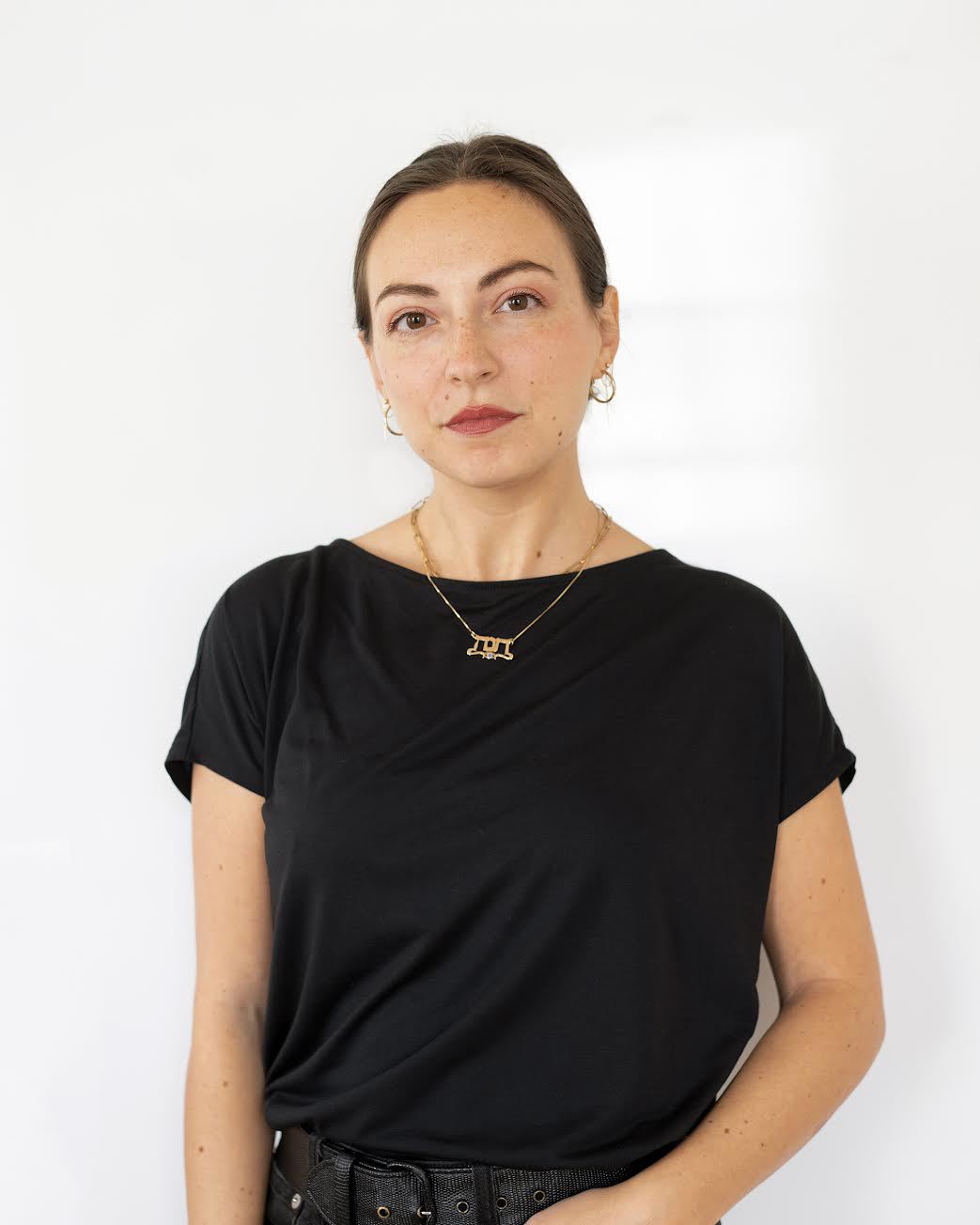
Courtesy of Hannah Altman
Jewish-American photographer Hannah Altman is the first Blanksteen Artist in Residence at the Joseph Slifka Center for Jewish Life at Yale.
Through this program, Altman was given $10,000 to create a collaborative work with students, who also make their own artworks, around the central question of the residency: “When and How does speech become violence?”
Aviva Green, the Social Justice and Arts Springboard Fellow and engagement coordinator, who oversees student engagement, service, social justice and arts opportunities at Slifka, described the goal of the Blanksteen program as a way “to create a real investment in Slifka’s part in the arts and in Jewish arts specifically.”
“We wanted to be able to support an artist, either emerging or already established, in the work that they do as well as give students who are interested in artistic endeavors a chance to meet with, learn from, and be inspired by a contemporary Jewish artist as well as empower them to create their own work,” Green wrote to the News.
Altman lives in Boston and comes to New Haven for a week about every six weeks. During her visits, she participates in discussions with the selected student groups but also in a number of events open to the community that Green organizes.
In both December and January, Altman participated in Shabbat afternoon learning sessions with photography prints and books. This January, Altman visited the Prints, Drawings and Photographs study room at the Yale University Art Gallery. Accompanied by students part of the cohort, they discussed artworks from the collection such as an etching by Faith Ringold, “Under a Blood Red Sky #9.” The same evening, she also presented her previous work and the upcoming project she has been working on at the Slifka Center.

Back home, she creates photographs which are centered around Jewish culture, storytelling and the body. At the center of her images is the idea of collective memory.
“All Jewish people share a past, passing down heirlooms and sharing stories and performing rituals,” she said during her talk at Slifka, “the ways in which we use Judaica in imagery can further ideas of collective memory with a photographic link.”

She uses both material symbols from Judaic culture as well as in the immaterial representations of Jewish thought. Even though some of her photographs are object-based and other narrative, all her images share the world of Judaica.
“They’re speaking the same language, they share the same universe and whether it can be pointed to or not, Judaism is the world they inhabit and the outlook through which we view them,” Altman said.

To address the central question of the residency, Altman explores how Jewish narratives build tensions and how individuals share fictional stories that are often a painful reflection of the truth of the writer and their surroundings.
The photographs she has been creating for the residency try to uncover what builds tension in Jewish folk tales and how different individuals engage with these stories.

Hannah Altman has exhibited with the Virginia Museum of Contemporary Art, Blue Sky Gallery, Filter Photo and Athens Photo Festival. Her work has been featured in publications including Vanity Fair, Artforum, Huffington Post and British Journal of Photography. She received the Lensculture Critics’ Choice Award 2021 and the Portraits Hellerau Photography Award 1st Prize 2022. Her photobook “Kavana” (2020), published by Kris Graves Projects, is in the permanent collections of the MoMa Library and the Metropolitan Museum of Art Thomas J. Watson Library.

Throughout the hybrid residency, Altman engages in conversations around the residency’s central question with a cohort of Yale students who have some involvement with Slifka and an interest in arts. Together they converse about their artistic creations and discuss their different points of view on this poignant interrogation.
Netanel Schwartz ’25, a member of the student group, talked about how, as the program and the discussions continue, he imagines that all of their art will “be in dialogue with each other and build off of each other.” He explained how each student had different approaches to the central question as well as to artistic making.
“All these different ideas being thrown out help you get more creative,” he added.
The project Schwartz is planning on making will be building on his own family history, the history of Sephardic Jews in Israel. Schwartz will be taking iconic photographs in Israeli history and drawing the faces of Sephardic people on these images, including in them what he calls “cultural memory.”
Flora Ranis ’24, another student part of the cohort, who wishes to become a full-time artist, chose to be part of the program with the goal to create more art and experiment with new mediums. She also believes in the importance of discussing ideas in a group. She said her ideas shift by the end of every meeting.
“It’s really cool because if I had been alone in my room going through these emotions, I don’t think I would have come up with the ideas that I have,” Ranis told the News.
Ranis’ final project will be expanding on the central question of the residency, she explained, asking herself, “Who gets to define violence? Who is both allowed to be in pain and a victim of violence? Who is believed to be a victim of violence? Who is allowed to scream? And whose screams are heard?” She hopes to take inanimate objects and inscribe human-connoted pain to them, pushing people’s empathy and pushing viewers to question if they can extend their notion of empathy and violence.
The Blanksteen Artist in Residence at the Slifka Center will culminate in a public exhibition of Hannah Altman’s photographs and the students cohort’s artworks at the Slifka Center, 80 Wall Street, on March 30, 2023.







